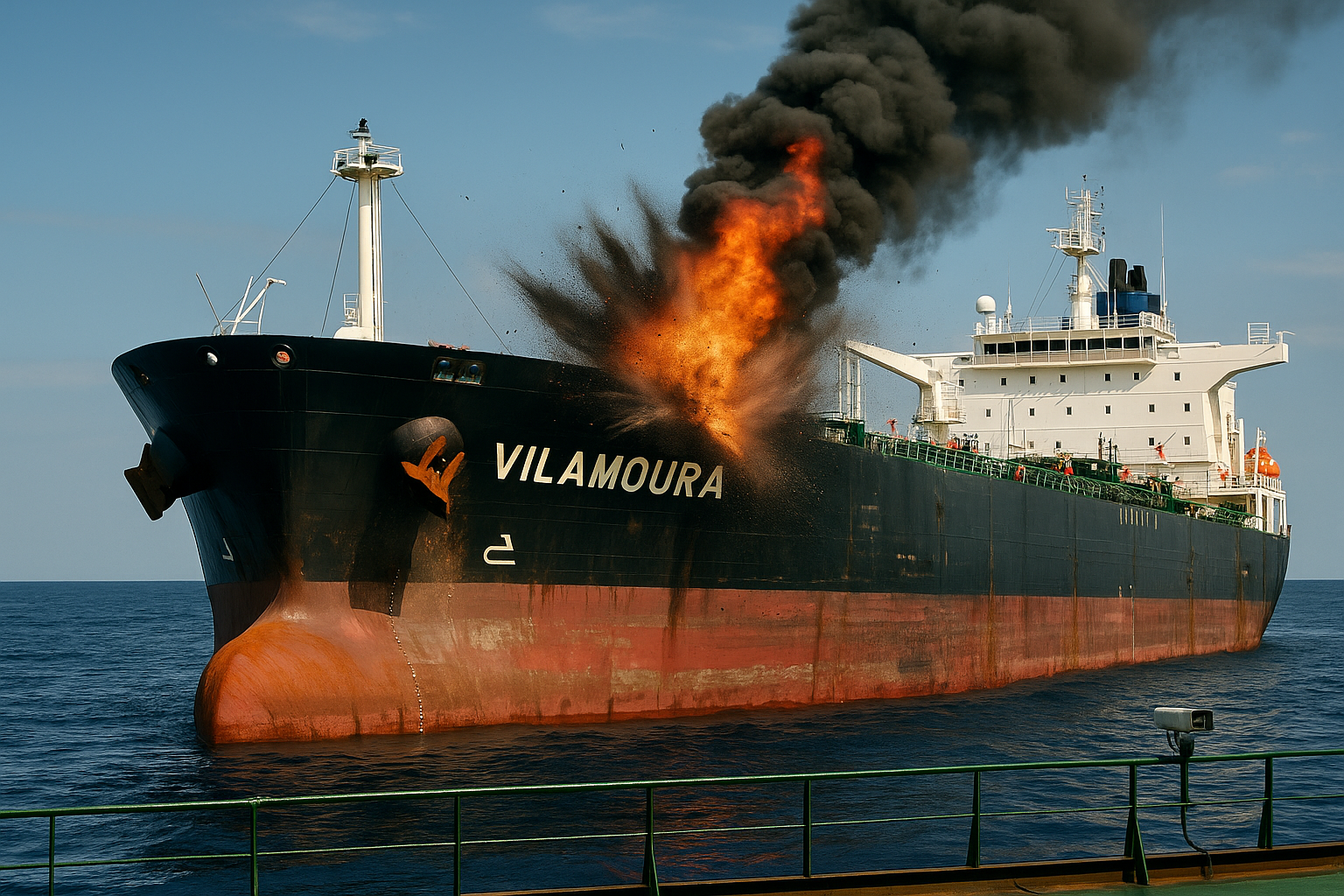Limpet Mine Fears Rise After Tanker Blasts in Mediterranean

A recent string of mysterious explosions and suspected limpet mine attacks targeting commercial tankers in the Mediterranean has raised fresh alarm over shifting maritime security threats.
“These incidents – marked by stealth, ambiguity, and geopolitical undertones – signal a shift in the maritime risk landscape that demands a recalibration of both operational vigilance and strategic foresight,” Norwegian P&I club Skuld stated in a recent advisory.
The latest blast involved the Vilamoura, a Marshall Islands-flagged suezmax tanker owned by George Economou’s TMS Tankers. The incident, which took place roughly 90 nautical miles from Libya’s coast, marks the fifth such event in 2025. The vessel had just taken on 1 million barrels of crude oil at Libya’s Zueitina Terminal. While no crew injuries or pollution were reported, the ship suffered considerable damage and had to be towed to Greece.
External Blast Likely Caused Damage
According to an update from maritime security firm Vanguard, early findings show hull deformation consistent with an external blast: “Preliminary investigations based on the damage sustained to the hull appear to have observed that the metal was warped inwards, suggesting an external explosion occurred and that an explosive device was attached to the vessel’s hull when it was in ballast condition.” This pattern aligns with tactics involving limpet mines, which have been suspected in similar recent incidents.
Dryad Global’s June 2025 threat review outlined a pattern of underwater explosive attacks on oil tankers in the Mediterranean. Earlier this year, the Seajewel, Seacharm, and Grace Ferrum were also targeted in related incidents.
Evidence Suggests Sophistication and Planning
Skuld pointed out the use of “magnetically attached timer-activated limpet mines,” which suggests “a high degree of planning and technical sophistication.”
A concerning pattern has emerged among affected vessels: all had passed Malta’s outer port limits, with at least two visiting Libyan ports. In addition, the Vilamoura had recently docked at Russian oil export terminals, including Ust-Luga and the Caspian Pipeline Consortium facility near Novorossiysk—a route that mirrors those of other attacked vessels. This has led to speculation over a possible connection to Russian oil transport networks.
However, no definitive evidence has confirmed these theories.
“Theories involving unnamed state actors remain speculative, and the lack of attribution continues to frustrate both commercial operators and security agencies,” Skuld noted. “This ambiguity severely hampers risk assessment and maritime threat forecasting.”
Skuld Urges Heightened Vigilance
Skuld is advising shipowners and operators to increase their situational awareness, review navigation routes, reduce time spent in high-risk ports, and ensure crews are trained and alert.
To lower vulnerability, it recommends underwater hull inspections by divers or remotely operated vehicles (ROVs) following high-risk port calls. Additionally, crews should be trained to spot potential limpet mine threats and maintain continuous hull surveillance via onboard CCTV.
The series of incidents, steeped in uncertainty and lacking clear attribution, reflects a complex and evolving maritime threat environment—one that calls for greater cooperation, awareness, and preparedness across the industry.